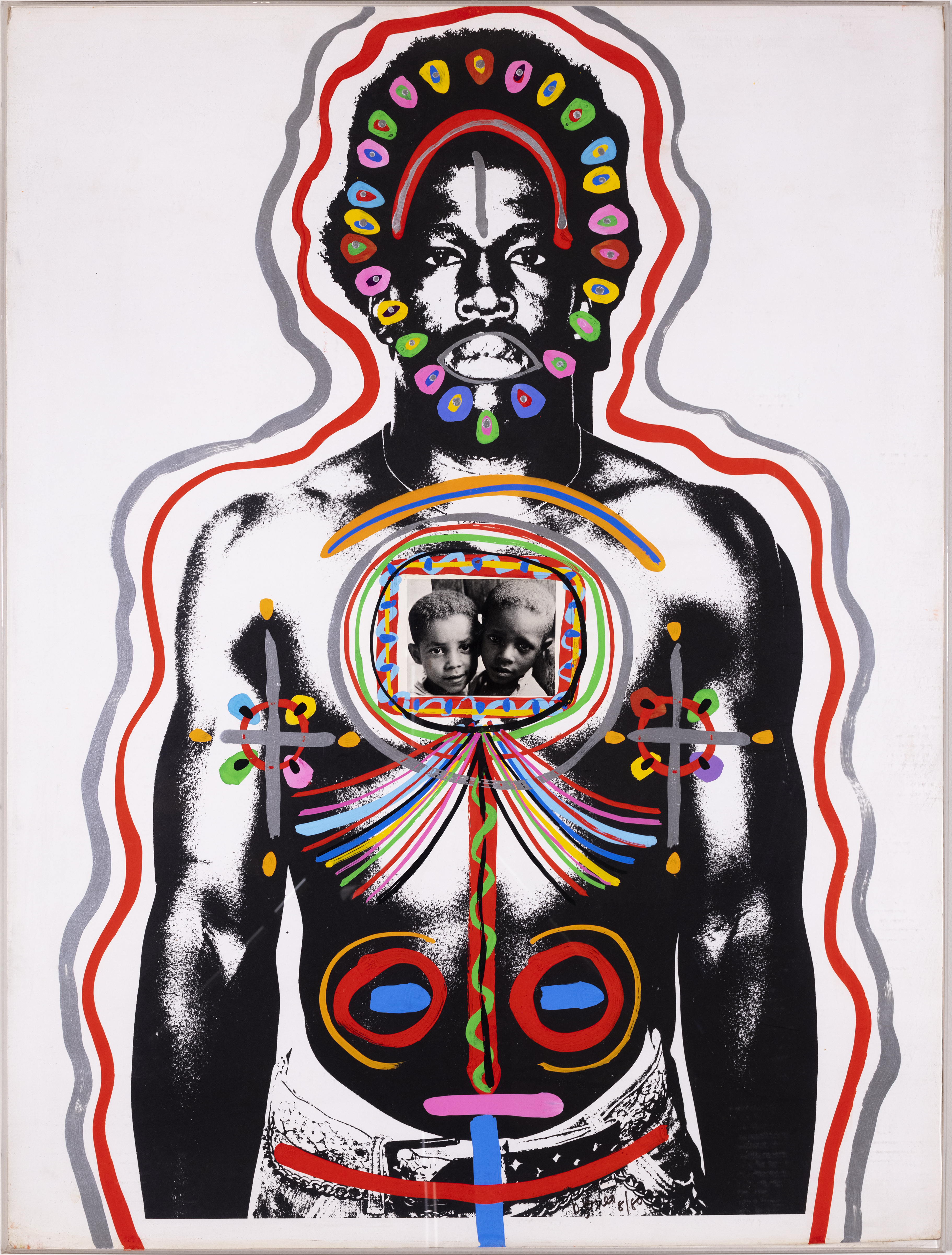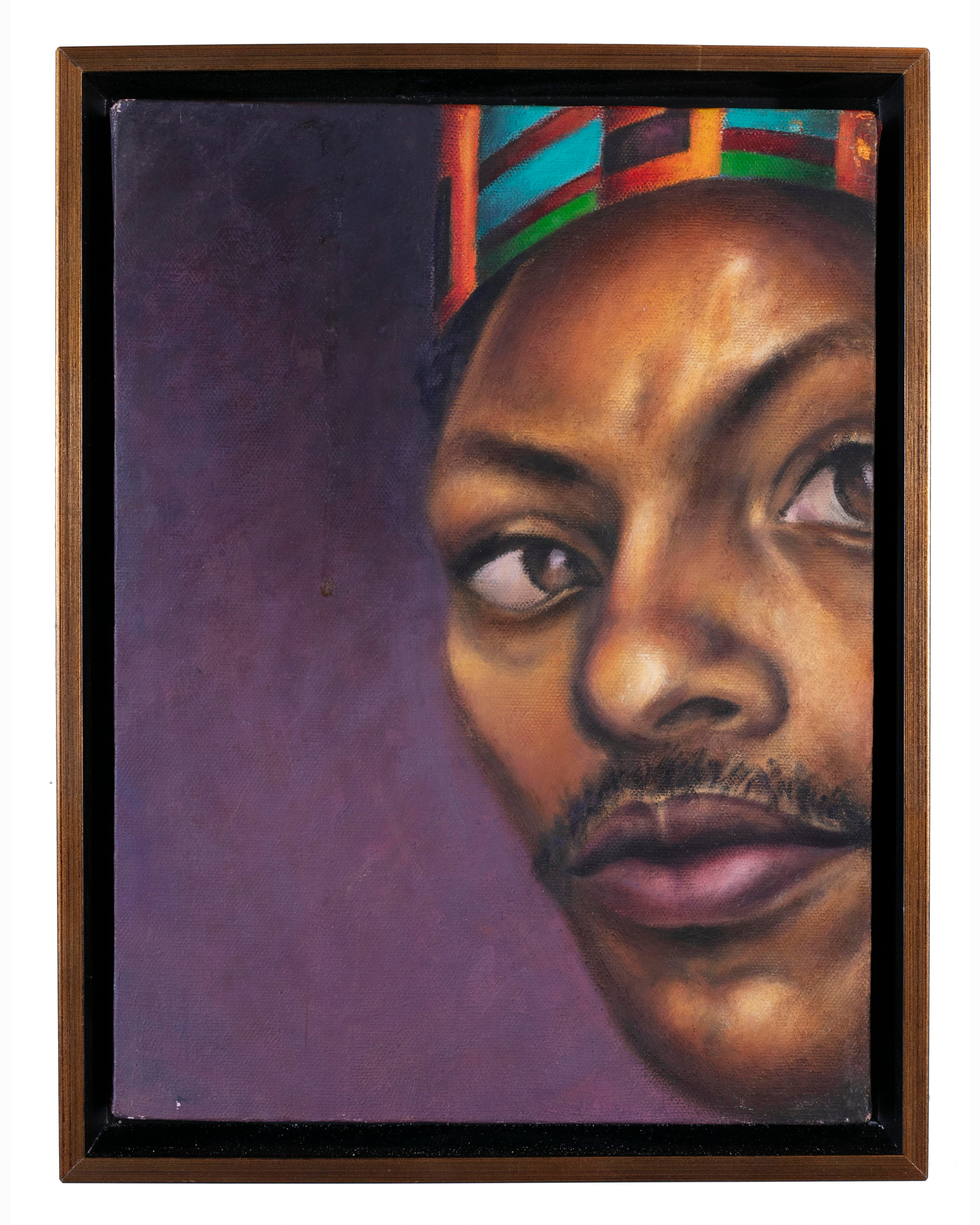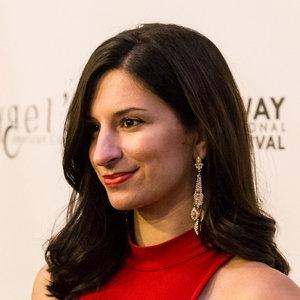Casey Mathern, Ben Jones, and Midori Yoshimoto, during the reception of the Universe of Ben Jones exhibition at the William Paterson University Galleries, September 2023. Photo: Andy Liu.
Ben Jones in his studio, Jersey City, NJ, February 2023. Photo: Manuel Acevedo.
“I dedicate this catalogue to my grandfather Frank Curtis, who was a working-class Black Man born in Charleston, South Carolina, in the early 1900s.
My grandfather was the chief and rock of our family. Even though he suffered much racism in the South and the North, he always shared his great wisdom about life and struggle with us. He often said our humanity is determined not by how we treat the powerful but how we treat the weak.
He did not have a college education, but for me he had a doctorate in WISDOM.”
These words are the brief yet powerful introduction to “The Universe of Ben Jones,” curated and cataloged by William Paterson University Galleries Director, Casey Mathern, and New Jersey City University Galleries Director, Midori Yoshimoto, Ph.D.

on board, acrylic and gouache, collage. Collection of the artist.
Photo: Manuel Acevedo.
Featured first at the WPU Galleries in honor of Jones's status as an alum, “The Universe of Ben Jones” exhibit has since moved to the NJCU Galleries through April 2024 where Jones is a professor emeritus, having taught at NJCU for over forty years. With a storied history shared between Jones and the two universities, it is fitting that this should be a co-curation. Speaking with Mathern and Yoshimoto, their fondness and reverence for the artist Ben Jones is evident as is their esteem for art history and the shared nature of the visual medium.
While the exhibit remains ongoing, NJCU organized a special event entitled “Ben Jones in Conversation with Dr. Dennis Raverty” wherein Dr. Raverty, a specialist in African and African American Art, and Jones discussed the inspiration behind his art, the social justice he has always advocated for, and how the intersections of his identities have informed his work. The discussion was held on February 6th and was a highlight of Black History Month.
The event transformed from a panel discussion about art to a communal conversation between Jones and those in attendance. Ever the teacher, Jones came to life when interacting with attendees. It was a panel discussion, turned Q&A session, turned performance lecture. His energy was palpable.
“I miss being around the young people because you represent energy. You represent life. You represent other new ways of thinking.” Jones’ exuberance and love of connection was evident as he stood speaking to his audience. He and the two moderators had been seated behind a table but his excitement and energy would not allow him to remain seated. He went on to explain how important it is for young artists to connect with their elders and how important it is that the opposite holds true as well. What is there to stop the elder, more experienced artist from speaking with and learning from the novice?
While his work is vast and varied, touching on nature, ecology, and technology, so too does it touch upon racism and sociopolitical themes. As inferred in his catalog introduction, these themes are close to his heart and ever present in his work. A fact that we would be remiss to ignore during Black History Month.
Broaching the subject of Black History Month, both gallery directors Mathern and Yoshimoto acknowledge the Catch-22 that is programming and curating for a demographic minority in the shortest month of the year despite the desire to highlight Black artists and patrons throughout the year. When asked how this sort of calendarial segregation affects her work as a curator, Mathern said,

William Paterson University Galleries, September 2023. Photo: Midori Yoshimoto
“That is something that I wrestle with all the time and something that I’ve talked to other gallery directors and museum workers about. I think everyone has their own approach and as a non-minority myself, I am listening. I’ve heard people express that they like it when everybody focuses on something and I’ve also heard other opinions, that every day should be Black History Awareness. I would say that as a gallery connected to an institution of higher learning that has an established calendar of awareness months and weeks, that is how our Student Government Association operates. We are a Hispanic and minority-serving organization and we defer to the Student Government Association and how they, and the administration, want to celebrate things. In essence, we are trying to do both.”
Yoshimoto, while in agreement, discussed how differently she relates to these awareness months as an immigrant.
“Having grown up in Japan where I didn’t really have this identity consciousness until I came here for grad school, my knowledge of how the American education system operates is limited to raising my own daughter and how her school celebrates these months. I’m learning that their curriculum is based on it and that it has carried over to higher education to a certain extent. Hopefully, that will change but maybe taking turns is not a bad thing to do. I do have mixed feelings.”
Mixed feelings were the consensus. Near impossible to deconstruct a social construct in one sitting, Mathern concluded “This is everyday work that we need to undertake. This is not something that can be solved in thirty days.”
A diverse understanding of the world is necessary to be an educated and empathetic individual. Discovering new information is pivotal to maintaining an open mind and an open heart. Art is one of the many ways in which humans relate to one another, and how we learn. How we discover. As Jones says, “I am a neophyte in my explorations, but I am glad to know I have an interest in these things, especially the universe and ecology. I feel like I am part of both the right and the left sides of my brain. In other words, for me, the arts and sciences have always been essential to our lives. My work during the last fifteen years has been exploring their connections and interrelations.”
Fifteen years may sound like a long time but Ben Jones has been an artist for nearly six decades now. When Mathern and Yoshimoto were tasked with curating this exhibit, they were relieved to learn that Jones would be extremely generous with his time. Traveling to his storage unit to sift through decades worth of creativity, Mathern and Yoshimoto decided to, as Mathern said, “take an unabashedly ambitious approach to representing his art.”

When asked how one can delve into sixty years of work and whittle down a selection palatable for audiences, Mathern explained “We were telling his story as representatives of his alma mater and as his place of employment for four decades. So we wanted that to inform the story we told with his artwork, which is: that he is a mentor, he is a teacher to his core. He has that ability and he connects with students of all ages in a way that I have never really seen from a teaching artist. That was an important aspect of his life. This was a very biographical show.
“We were thinking about the social context of his work, and when he began working and establishing himself was during the 1960s during the social revolution, as a member of the Black Panthers, as someone who was living between Jersey City and Newark and New York City, and was engaged in dance and political action, and community justice and public service always.”
“The Universe of Ben Jones” runs through April 3, 2024, at New Jersey City University and previously ran from September 2023 through December 2023 at William Patterson University, both thanks to a grant from the Mellon Foundation.









